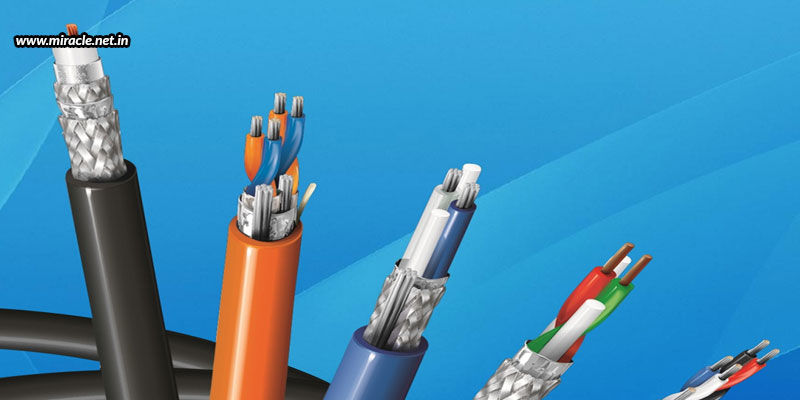The two main sectors for series data cables are computer bus and industrial bus; the former being a communication system that transfers data between components inside or between computers; and the latter being a communication system that transfers data between components or devices at different levels in a manufacturing plant. But, it is the computer industry that has had greater success in achieving unbiased industry-wide standards, while the industrial sector is more independent, and can produce cables specifically for their brand names.
In the industrial world, there are a number of variations due to different speed and impedance requirements, ranging from 100 to 150 ohms. Moreover, manufacturers may design a hybrid cable for automotive manufacturing plants with components using PROFINET, INTERBUS, and Industrial Ethernet protocols, all in one cable; allowing them to connect their PLC logic to whatever control line happens to come on the next machine.
Protocol standardization
Industries are looking for open architecture interface as the need for plant-wide system compatibility increases. Ethernet protocol of 100 ohms seems to be a good choice in this case. Higher information speed requirements, diagnostic feedback of controls, and interest in motor feedback make Ethernet a great choice to offer the performance required. However, these requirements are still driven from the controls manufacturers’ system trademark, some of them being PROFINET, CC-Link IE, Industrial Ethernet, and Foundation Fieldbus HP. Yet, many independent special interest groups have started to come up and work for system compatibility of conventional Ethernet. One such example is Ethernet POWERLINK Standardization Group that has developed a formidable product offering with data transmission speeds of 100 Mbit/sec; and is waiting for component manufacturers to adopt their standard Ethernet protocol into their systems.
Connector standardization
The standardization of connectors is also being accepted as major device dealers are settling for metric-type connectors like M-8, M-10, and M-12. RJ45 is also used, but it is modified to provide larger gauge compatibility, harsh environment resistance, and shielding capabilities.
To conclude
As you can see, Ethernet-based architecture is becoming an accepted choice for serial bus networks, since the compatibility and standardization of Ethernet from the computer side, found in front office, drives the manufacturing side to generic products. However, the marketing side of the controls industry still continues to manufacture proprietary products, developing cable requirements that are exclusive to the brand. Having such a diversity of protocols allows cable manufacturers to offer a lot many different cable systems. Also, each architecture has a unique conductor configuration and electrical requirements.
From past to present
The goal of various bus protocols and designs developed over the last 50 years was to find a cable capable of fast computer speeds that could withstand electrical noise and harsh environments. To accomplish this goal, technology is advancing to produce fiber optic cables, which is more suited to these requirements.
Whatever kind of cables you’re looking for – basic or fiber optic – Miracle Electronics is where you should be. These are the most dependable and versatile wire harness manufacturers from India, manufacturing a variety of different types of cables and harnesses for a myriad of applications and industries. You can also get in touch to design the perfect customized cable harness for your requirements.

No comments:
Post a Comment